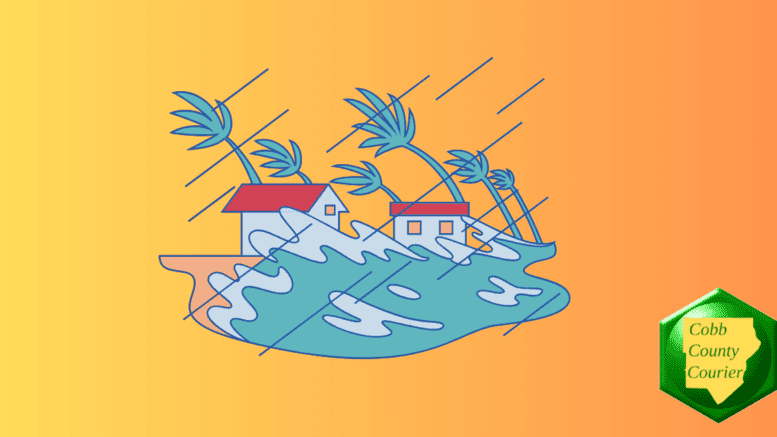By John A. Tures, Professor of Political Science, LaGrange College
As Atlanta and Asheville learned last week, they’re no longer insulated from climate change in general, or hurricanes in particular. Thanks to more frequent hurricanes, and more damaging storms, it’s no longer the coast that has to worry about these scary storms.
According to the Severe Weather Team 2 Chief Meteorologist Brad Nitz, Hurricane Helene dumped more than 25 billion gallons of rainwater, as WSB cites. And that was only because Cobb County and the rest of the city were on the rainy side of an otherwise severe storm, and could have caught the power side, as Valdosta and Augusta did. And that Chattahoochee River in Smyrna is just a bit bigger than it was before.
Now, Atlanta didn’t face the same level of flooding as Asheville, which was the victim of a confluence of events. But the boil advisory is real, and some lower-lying areas in Georgia’s Capital were underwater. And with those billions of gallons of rainwater, another storm or two in the region could be just as devastating.
Big hurricanes are getting more frequent and more powerful in their intensity. In research I published last week for Florida alone, the time frame of 2000-2024 had the most Category 3-5 storms in recorded history. These last 25 years had the second most Category 4-5 storms, and the most Category 5 Hurricanes hitting Florida in history. And storms that blast through the Sunshine State have a habit of doing damage to the Peach State as well.
And it’s not just Florida. My research on Atlantic hurricanes shows that it’s the entire Gulf and East Coast that are getting battered by these storms, ramping up in intensity and frequency. Nitpickers claimed I wouldn’t find the same in the Pacific. As you can see here, they were wrong.
500-Year Storms are happening every few years now.
Even if, by some miracle, you don’t live in a hurricane, tornado, or fire zone, you’ll still pay for it. Overall insurance rates are increasing, and such companies are going out of business.
Is there anything we can do?
Actually, there is.
As you’ll see in my data, the frequency and intensity of hurricanes hitting Florida, or even the rest of the Atlantic, actually declined. These severe storms fell from a high of the 1920s-1940s to a big dip from 1950-1999. Hurricane Andrew was an outlier, not like norm like it would be today.
What happened? The United States, Europe, and other OECD countries cut back on their environmental pollution, with tough laws and an Environmental Protection Agency (EPA) to enforce them. We also shifted to an economy less dominated by old school industrialization. But now such laws and agencies are under siege by populists, and third world countries are ramping up their pollution-inducing industries. And as a result, those devastating storms are back, with a vengeance.
We still have time, and evidence that such green policies could reduce the incidence of these damaging hurricanes. We can choose safety, cleaner air and water in the process. Or we could choose damage, higher insurance costs, and a less clean environment.
John A. Tures is a professor of political science at LaGrange College in LaGrange, Georgia. His views are his own. He can be reached at jtures@lagrange.edu. His “X” account is JohnTures2.
